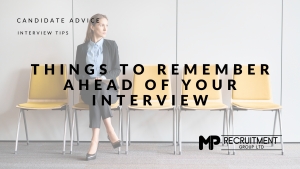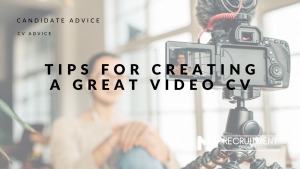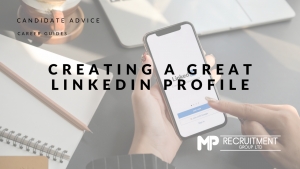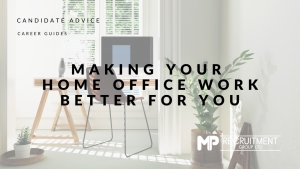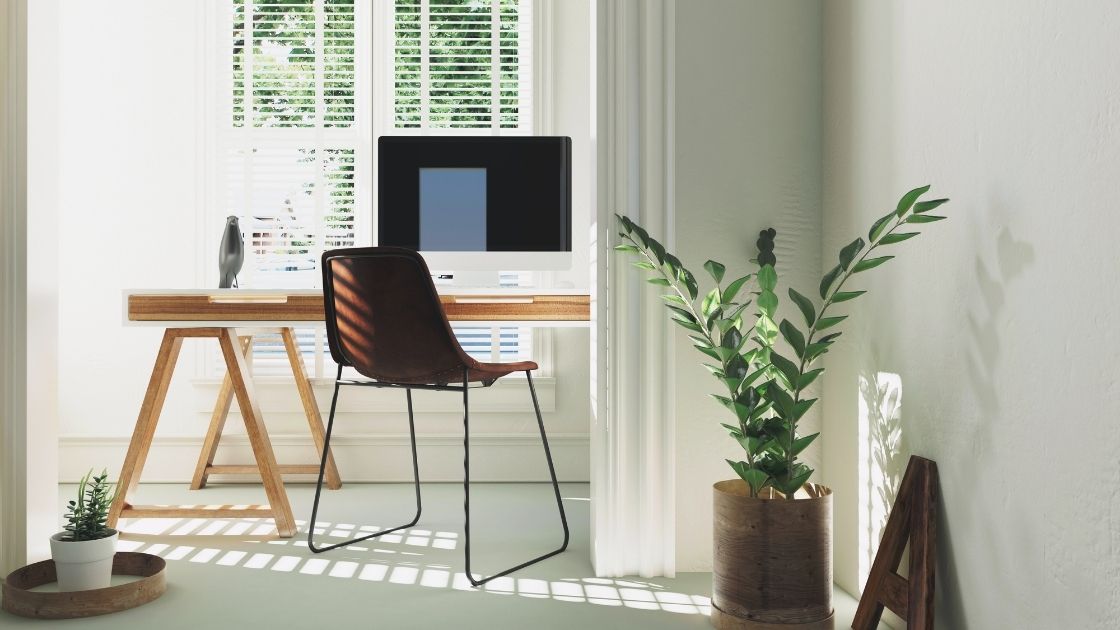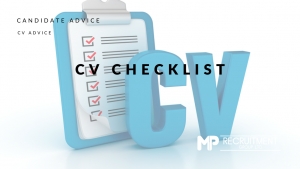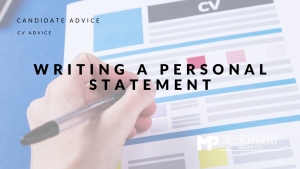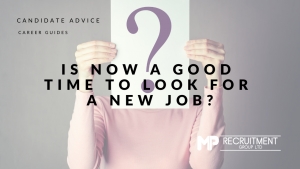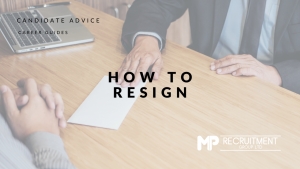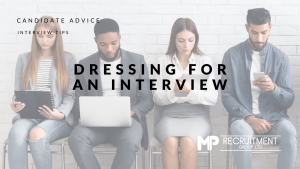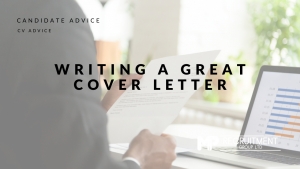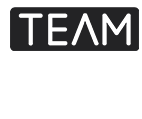Sam Evans
Things to remember ahead of an interview
Things to remember ahead of your interview

Don’t let nerves get in the way
Feeling nervous to an interview is natural, because you want it to do well and it matters to you that you do well. No matter how much preparation you’ve done and how confident you’re feeling, nerves will always creep up. Before you step through the door into the interview, take a moment to compose yourself and take some deep breaths if that helps. Once you’re in, don’t feel like you need to start talking as soon as the interviewer has asked their question. Sometimes it’s good to take a few seconds to pause in order to create a clear, concise and confident response.
Be yourself
Everyone else is already taken, so just be yourself. Be genuine and honest, allow your personality to shine through whilst still remaining professional in your conduct. Highlight all your best qualities and demonstrate what you as a person can bring to a company. Remember, they’re hiring a person, not a CV, so while you need to demonstrate relevant experience and skills, showing off your great personality will also give them a great idea of why you should be the one for them. If you don’t sell yourself, no one else will!
Be Prepared
We’ve talked about this before, but being prepared for an interview is almost as important as the interview itself. Research the company and the job, try and find out a bit about the interviewer too if possible. Brush up on your CV so you don’t get caught out by anything and prepare for some questions that you might get asked. It’s also a good idea to find out things like how to get there and where’s best to park in advance, to avoid getting flustered when you get lost on the day.
Build a great foundation
The idea of building a rapport with the interviewer is to demonstrate that you share a similar professional outlook and work ethic. Show genuine interest in what the interviewer is saying and positively express your enthusiasm for the role. This will ensure you leave the best possible impression.
Create your own impression
It’s easy to think an interview is only a one-way process, but it’s not. It’s also a chance for you to get a feel for the company, the job, and the people. It’s important that you feel comfortable about the company you are interviewing for. Allow yourself the opportunity to take in your surroundings. Do the staff look happy? Is there a good atmosphere? Does it look like somewhere you could work? If you like what you see, don’t be afraid to tell the interviewer that you can see yourself working there and let them know that you’re interested in the role!
Tips for creating a great video CV
Tips for creating a great video CV

People’s interest in video CVs is growing as candidates look to find more ways to stand out from the crowd in an ever-competitive market to find a new job. Yet, many people don’t know where to begin when it comes to putting a video CV together.
What is a video CV?
A video CV is a short video created by a candidate for employment and uploaded to the internet (or emailed to a hiring manager) for prospective employers to review. In the video, the candidate shares detailed information about their skills and experience. Generally, a video CV should complement a paper CV, rather than replace it altogether. The idea of a video CV is to catch the attention of a hiring manager. You can also show off your personality much better on a video CV too.
Should I use a video CV?
The idea of getting in front of a camera can be scary, but in some industries a video CV can really set you apart. Video CVs are commonly used to apply for creative and customer-facing roles in sectors such as advertising, creative arts, marketing, media, PR and sales, but you shouldn’t discount it just because you’re not working in one of these industries, as they can also be particularly useful when applying for digital, journalism, fashion or IT related roles. When deciding whether to use a video CV take into consideration the job you're applying for and the company you hope to join. Do some research into the culture of the organisation to help you decide whether it's suitable.
Preparing what to say
If you decide to give it a go, there are a number of things to consider before you start filming, first of all would be thinking of what to say. We would recommend that your video CV doesn’t drag on too long, probably between 45 to 90 seconds. Start by writing down what you want to say so you can use it as a cue when talking. You shouldn’t try to film without using a script, this can lead to forgetting some of the important points you want to get across. Learn your script beforehand so you have a good idea of what you’re going to say, then keep the script close by (but out of shot) to remind you of what to say if you get stuck.
Location and appearance
Plan the location of your video to ensure that you have a quiet, well-lit space to film in. You'll also need to consider the backdrop of your recording. It should be clear and free from clutter. If you're using a specific set or props make sure that everything that appears in your video is appropriate and professional. Appearance also matters. Plan your outfit in advance, making sure to dress as you would for an interview. This could mean a suit and tie or business casual - take your cue from the type of organisation that you're applying to.
What to include
It's so important to be genuine so don't be tempted to copy another video CV you see on YouTube. Structure the video so that it has a beginning, middle and end. Start by introducing yourself, explaining why you've created the video and why you're the right person for the job. Talk about your unique selling points and any relevant skills and experience, showing examples of your work and demonstrating your skills using slideshows, clips, or on-screen graphics if possible. At the end of your video summarise what you have told the employer and reiterate why you are right for the role. Thank them for watching the video, and don’t forget to include your contact details. Link to online platforms that could strengthen your application, such as a LinkedIn profile or website.
Creating a great LinkedIn profile
Creating a great LinkedIn profile
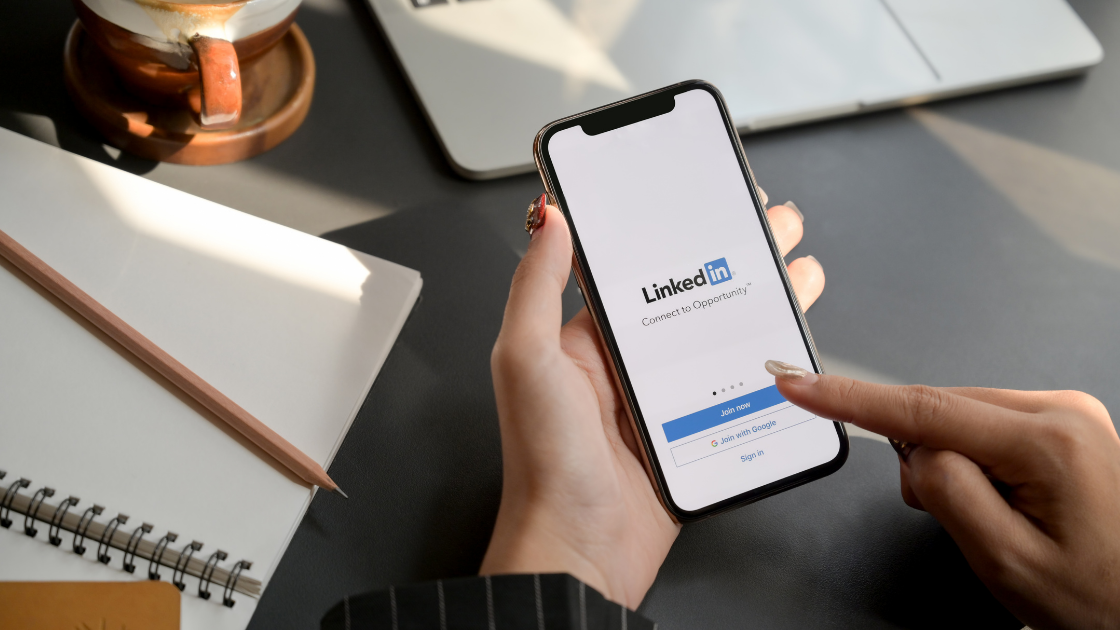
When you’re looking for a new job, you need to effectively showcase your skills and experience to potential employers. In an age of social networking, this includes having an online presence in your job search. LinkedIn is the world’s biggest professional social network, and creating a strong LinkedIn profile could play a crucial part of your job search.
Many employers or recruiters will search for a candidate on LinkedIn, so you need a LinkedIn profile that’ll impress prospective employers. Here’s our guide to making the most out of your LinkedIn profile.
Start with a good summary
Your summary is the text field that sits beneath your name and profile picture. Use this as your own personal pitch to potential employers to show what you can offer to them, but keep it fairly brief. The best LinkedIn summaries establish career goals, highlight relevant skills and experiences, and address any career history gaps.
Your online CV
Show off your work experience in the work and education sections. Much like a CV, you have an opportunity to outline every previous role you’ve held and course you’ve completed, and explain the details of each of these. Use this to complement your real CV, rather than replacing it. Whereas it’s expected that a CV is a fairly detailed breakdown of your work and education experience, keep things short and sweet on your LinkedIn profile. Recruiters or Employers will often scan multiple profiles looking for relevant candidates, so your work experience needs to be the quick “hook” that makes them want to ask you for a CV or a chat.
Show your skills that employers crave
You want to show off your best qualities that employers will want to see from candidates, and you can do so in on your LinkedIn profile. You can add skills to your profile, but perhaps more importantly, your connections can endorse you for particular skills. It works as a quick reference guide of your skills and experience. Use it to show that you have qualities employers look for.
Get Recommended
Much like getting a reference, you can get other people who have dealt with you in the past to write a testimonial about you as a person, to share their experiences of you, your work and your skills. By having relevant recommendations on your profile, you show employers that there are professional people willing to vouch for you in a public forum. They get a reference before they meet you, which can make a huge difference to the success of your job search.
LinkedIn is a hugely popular and useful tool, not only for professional networking, but also for getting a new job. Whether you’re doing your own job search, or being headhunted by a potential employer, a good profile can really enhance your chances. Make connections to increase your network, and get those people to endorse your skills or make a recommendation on your profile. Also, create and engage with relevant content on LinkedIn, as your recent activity will be visible to those viewing your profile, so will give another snapshot into you as a person.
Making your home office work better for you
Making your home office work better for you
Many of us have been working from home for a while now, and with businesses realising the benefits of home working, some of us may be continuing remote working at varying levels for much longer too. You might find that makeshift your current office setup in the form of your dining room table, sofa, or bed just isn’t cutting it. Where you work has a serious effect on your productivity and wellbeing, so it’s vital to create an area that makes you feel calm, comfortable, and able to carry out your work effectively.
Make it practical
OK, we get it. You want to make your home office look great. And when it comes to appearance alone, those picturesque home office designs you see on Pinterest are amazing. But whilst they might look good on your Instagram feed, they might not be the most practical of solutions. So before you paint your cupboards a lovely teal colour, start a search for an antique wicker chair, or buy a fully adjustable standing/sitting desk, ask yourself if these things will be worth the investment, and will they make your life more comfortable? Is that desk going to fit anything more than a laptop and one single pen? Could you actually sit in that chair for eight hours a day? Remember, this area needs to spark productivity, not a bad back.
Focus on placement
Where you decide to work in your house is a key part of getting the most out of your home office. Firstly, try to avoid designating your home office somewhere other than your bedroom. Whilst it sounds great, rolling out of bed and straight into your office chair is probably not the best way to get your day off to a creative start. If possible, choose an area that has lots of natural light. By placing your desk in front of or adjacent to a window, you’ll not only have something to look at when you’ve hit a brick wall, but you’ll also be able to give your eyes regular breaks from screen-time. If you don’t have access to much natural light, introducing standing or table lamps into your workspace could also make it much easier to concentrate. In addition to good lighting, it’s equally important to choose somewhere quiet where you’re not likely to get interrupted, chatty housemates, a loud washing machine, or a blaring TV aren’t the kinds of things that’ll make you look good on a conference call.
Avoid disturbances
There would be nothing worse than a family member or housemate walking into the room when you’re on a video conference call. Take steps to avoid this by communicating with those in your household. Agree who can enter the workspace, and when they can enter. It’s essential that you set out with the people you live with how your workspace will be used and who is able to enter. If necessary, provide a timetable to the people you live with so they can know when the area is free to use. A “Do Not Disturb” sign on the door might be helpful.
Second screen
These days many workers use two screens (sometimes even three). It reduces the time taken to switch between programmes and can boost productivity compared to one screen alone. If you only have one screen, you often can only see one thing at a time, making the switching process laborious.
A second screen will be especially helpful for people who are currently working on a laptop with a relatively small screen.
Supplies and storage
So you’ve created what seems like the perfect workspace. The only problem is, you keep having to get up to find a pen. To reduce the urge to wander off, make sure you have everything you need within close proximity of your desk. Whatever you’ll need that you probably normally have on your work desk. Pens, paper, post-it notes. This might also mean looking into creative storage solutions.
Bookcases, drawers, wire organisers, and filing cabinets are a great place to store your essentials.
Keep your desk tidy
You’ll inevitably build up clutter on your desk over time, so it’s important to declutter from time to time. Whilst there will always be some essentials you’ll have to keep nearby, it’s likely that your desk will only fuller as time goes on, which makes regular decluttering an important task. Set some time aside to sort through your things, figure out what you need to keep, what you need to put away, what you need to dispose of, and what you need to move. Whether it’s old notes you no longer have a use for, printouts you used for past meetings, or one of your child’s toys, there’s probably a better place for it than your desk.
CV Checklist
CV CHECKLIST
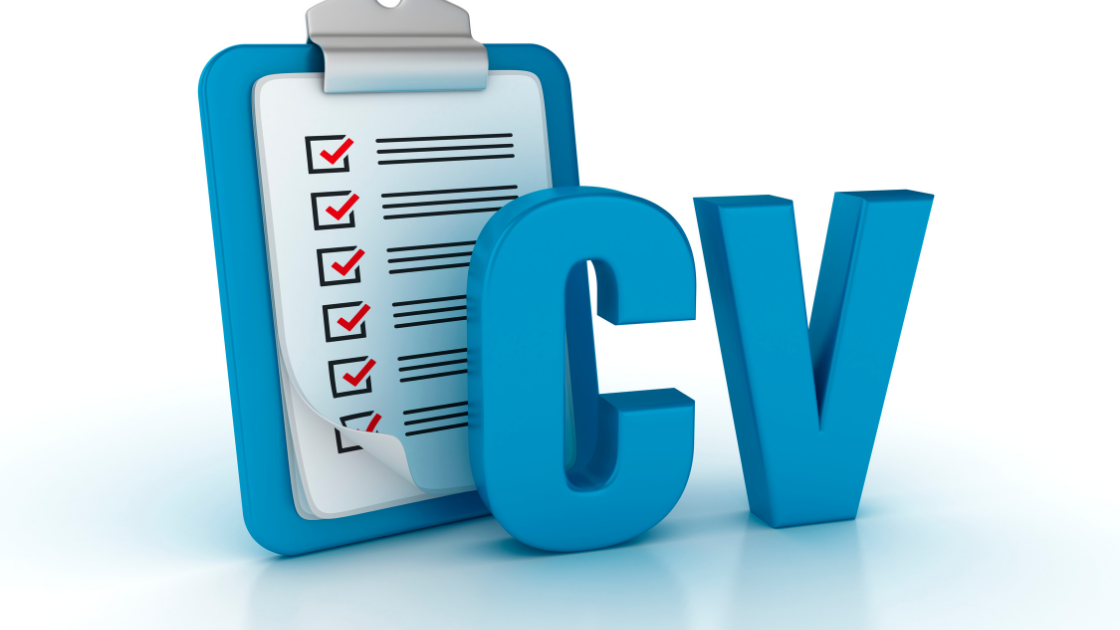
Writing a CV can be a difficult and stressful task, particularly if you’re having to write it from scratch. There’s not a ‘one size fits all’ solution to writing your CV, it depends on your situation and what you’re looking for next. However, we’ve put together some basic points of how to best write your CV if you’re not sure where to start.
1. PERSONAL DETAILS
Are your personal details correct on your CV? Whether your applying to a recruitment agency or direct to an employer, they will always want to contact you. Make sure your contact details are right so you can be contacted, avoiding the possibility of missing out on the opportunity. Date of birth, Gender, Nationality are not necessary if you don’t want to offer these details.
2. PERSONAL STATEMENT
This is an area of a CV that is often missed out. A personal statement is an opportunity to explain who you are, and why you would be suitable, in a few sentences. Let the recruiter know who you are, what you’re looking for, and tailor it as to why you’re applying for that particular role.
3. WORK EXPERIENCE
This will most likely be the largest section of your CV, unless you’re a recent school leaver or graduate. List the most recent first, and outline all your responsibilities, achievements and skills gained in concise bullet points. List the organisation and job title, also be sure to include dates of when you started and finished every role.
4. SKILLS & ACHIEVEMENTS
Here is a chance to show how your previous work experience has given you the skills you need to be a suitable candidate for your next role. You should list your key skills, it’s a good idea to tailor this depending on what job you’re applying for. You could also list some achievements that you’re most proud of.
5. EDUCATION
Next you should list your educational experiences, with dates of when you attended the school/college, the qualification and the grade you achieved. You could also give details of any achievements that you’re proud of that you feel might set you apart from other candidates.
6. HOBBIES AND INTERESTS
While it’s not always needed to include your hobbies and interest, mentioning relevant ones could back up some of your stated skills. It also shows your human side, and gives something to talk about in the interview. Don’t just say that you enjoy socialising with friends or listening to music for the sake of putting something, make sure it adds value to your CV.
7. REFERENCES
It’s not necessary to note the details of your referees on your CV unless you are specifically asked to do so by the employer. Stating that references will be available upon request is perfectly acceptable. However, you should ensure that you have referees ready if you’re offered who are willing to give you a reference.
Writing a personal statement
WRITING A PERSONAL STATEMENT
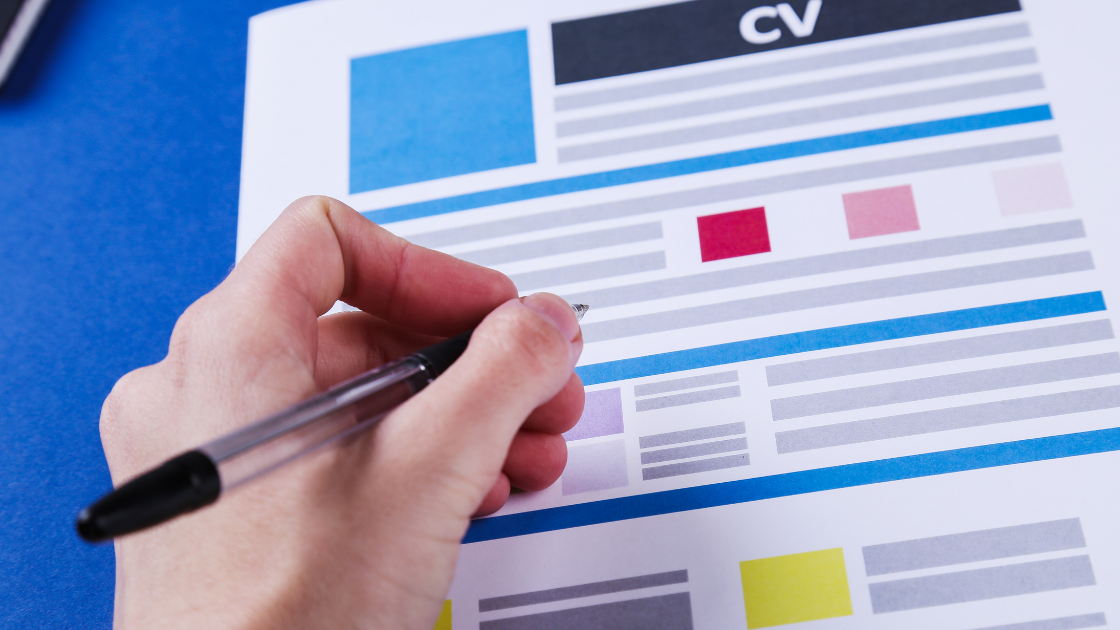
The personal statement is usually found at the top of a CV, so it’s the first thing that a prospective hirer will see when they read through your CV. If your personal statement isn’t up to scratch, or isn’t there at all, it might be the difference between a recruiter reading your CV or rejecting it.
WHAT IS A PERSONAL STATEMENT?
The purpose of a personal statement is to sell yourself to the reader, it’s a brief personal summary given to prospective employers to help you stand apart from the competition. It’s usually the first section of your CV after your contact details, so should be used to make an instant impact to the hirer. A Personal Statement should let a prospective employer know who you are, what you can offer and what your career goals are.
KEEP IT CONCISE
Ideally, your personal statement should be no more than around three or four sentences, any more than this and you run the risk of rambling and taking up valuable space. You should remember that it’s a summary, so keep it concise and to the point. You can use a Cover Letter and the rest of your CV to go into details.
MAKE IT SPECIFIC
Like your CV and Cover Letter, you should make your personal statement to the job or company you are applying for. Use the job description as inspiration to hit the key points that the employer is looking for. A personal statement should be brief, so you don’t want to waste your words, make sure what you write adds value.
Is now a good time to look for a new job?
Is now a good time to get a new job?

Covid-19 has changed so many things in the world, and the way we work has been one of the most significant changes that lots of us have had to deal with. With many of us working from home, speaking to our colleagues on Zoom and some people haven’t been into their office for getting close to a year now. Some might not even ever return to their office as companies and employees get used to the flexibility and cost cutting that home working has brought about.
However, with all the restrictions and people worried about stability in their job, is now a good time to start searching for a new job?
Crisis breeds opportunity
The pandemic has given all of us the chance to revisit our values and priorities. Have you found that your job just isn’t meaningful anymore? Do you want your life to go back to the way it was before the pandemic? If not, that might be a sign that it’s time to reflect on what will bring you satisfaction and fulfilment. Perhaps you were recently made redundant? It could be a blessing in disguise. Use this downtime to get clear on where you want to work and the type of role and title you're seeking. Consider the activities you enjoy and are good at. A crisis can provide incredible momentum for positive change. Use it to your advantage.
Some businesses are doing really well
Whilst this is a tricky time for many businesses, others have never been busier. Some companies such as delivery companies have been amongst those seeing huge growth in demand, which has also seen a rise in certain SaaS technology companies with many people doing more online ordering. Perhaps the most important sectors that have been thriving are pharmaceutical and healthcare businesses, particularly anyone involved in developing vaccines or reliable coronavirus test. Tech companies have seen a boom too, with more and more people working from home.
Is anyone hiring?
It may feel like there are no jobs available right now with so many people being placed on furlough or being made redundant. Plus, with many companies sending most or all their workforce to work from home, will they be hiring right now? Well, many companies are. Some of those who are doing well during the pandemic are actually growing and need more staff to keep up with the demand. Job seekers could use this time to do research and identify industries and companies that are currently hiring, customise their application materials and proof read everything carefully.
Remote work provides flexibility
Conducting a job hunt is much simpler when you are working from home. Remote work provides more flexibility so that if you are networking or land an interview, you don’t need to worry about leaving the office early or taking a sick day. The current situation allows you to be more prepared and relaxed during interviews. You can also take this time to learn new skills or take an online course that will make you better equipped for the next phase in your career. Now that companies have got to grips with utilising the technology, their processes are probably much more streamlined than they might have been in Spring last year. Companies have learnt all about the value of video interviews, and many are even comfortable onboarding and training new staff on video calls, so you might not even have to go into the office.
Summary
To summarise, you can get a good new job right now. Don’t hold back on your job search if you’re unhappy in your role. If you have worries about how stable your job is and fear being made redundant, then maybe now is a good time to at least start the ball rolling on your job search. There are still many companies doing well who are recruiting as they continue to grow. However, establish the situation in your current role. If you feel pretty safe in your role and don’t think it would be sensible to move away right now, don’t take the risk if you don’t feel comfortable doing it. If you think about it, changing job can be risky at any time. You might not enjoy it like you first though, you might not get on with your colleagues, or you might not be matched to the role as well as you first though. Do what you feel is best in your situation.
How to resign
How to Resign

Congratulations on turning a new chapter in your life! There is nothing like starting fresh with new opportunity. We have always been firm believers in connections - never burn your bridges, because the world of business, especially in some career sectors, is not always as big as they may seem. People talk!
Here are a few tips on how to gracefully close your last chapter, and keep your reputation growing positively.
Finalise your new job
Look at your old contract, work out how much notice you have to give, then put that proposed date in your letter. Make sure you dot every I and cross each T before you hand in your notice. Get everything for your new job negotiated and finalised, get your start date sorted and your contract signed.
Write a resignation letter
It doesn’t have to be long so keep it brief and positive. A few manners go a long way, so don’t forget to thank them for their help and the opportunities they have given you. Include the date of your last day/shift.
Did you have roles that only you knew how to do?
Impart your knowledge of how certain things work with your boss if needs be, or let other colleagues know how to do what you do. This way, when you are going it will not be such a shock to their system. The transition of you leaving will be smoother as a result. Work hard until that last step out that door. It will leave a good impression with that employer; this may be useful in the future.
Resign with humility
Nobody likes a separation via text or email. Take the time to organise a face to face meeting with your manager, show respect for them by telling them to their face that you are leaving, and paint it in a positive light. Also make sure you are the first to tell them, and that it doesn’t run around the rumour mill first. Professionalism throughout your notice period is important, end on a high and remember that your current boss is probably going to have to give a reference to your new boss.
Exit interview
Just as you interviewed to get in a job, you may be asked to have an exit interview. These are usually ways to find out if the company has any areas in which it can improve. Maybe the reason that you are leaving has occurred before. Can it be resolved for others? Bear in mind that this is not a platform for slander or negativity. If you have something to say, make sure it is constructive.
Finally, if you are leaving to work for a competitor, do not be alarmed if you are escorted out of the building or put on gardening leave. Leave with your head held high and with your dignity.
Dressing for an interview
Dressing for an interview
Congratulations, you’ve secured an interview! If you’ve prepared well, researched the company and read up on your CV for when they question you about it, then you’re on the right track. However, it can all be undone by attending an interview in unsuitable attire. It can be difficult to know what to wear, especially if it’s your first time, so here’s how to plan your outfit.
Do your research
Just like researching the company and what they’re about, you should try and find out what the interviewers will be wearing. Most often this will be quite formal, and as a rule of thumb you should dress formally too. However, if the company you are going to have a very relaxed dress code, then turning up suited and booted might make you feel a little out of place – and they might think you don’t understand their company culture. Research the website, LinkedIn profiles and ask the recruiter what the best dress code will be.
Be Comfortable
When you’re in the spotlight and being grilled, you need to feel as comfortable as possible. If you’re wearing clothes that are not the right size, too itchy or just not comfortable, then you’re going to be on the backfoot. Wear clothes that you have worn before if possible. If you need to buy an outfit beforehand, try it on before your interview day to make sure it fits as you want.
Iron out the creases
As with your preparation, you should iron out any creases in your clothes before you attend. Again, it sounds obvious, but an unironed shirt or blouse just looks unprofessional and scruffy. Your whole outfit should look great. Similarly, you should make sure your shoes are clean and polished.
Also, you should remember that personal grooming is just as important. Guys, remember to have a shave, or if you’re going to keep your beard, make sure it’s clean and well-trimmed! If you’re wearing makeup, try and keep it quite low-key.
Don’t go in cold
You might not think about it, but the interview room might not be heated, so it could be really cold in there! Take layers, take a blazer, jacket or a smart coat for when your outside, but you could also wear and smart-looking jumper, as it would be reasonable for you to keep it on if you’re cold inside. Similarly, when it’s warm, don’t overdo it so that you’re absolutely boiling!
Stop worrying
Once you’ve planned your interview and stepped into the interview room, stop thinking about your outfit. You can’t change it now, and this is the time to sell yourself.
Writing a great cover letter
WRITING A GREAT COVER LETTER

Behind every good CV is a good cover letter. Quite often employers won’t ask for a cover letter, but you should see it as an essential part of your job application. The cover letter gives you a chance to sell your skills and experiences to recruiters in much more detail than you can on a CV.
A cover letter is not a continuation of your CV, it’s a tool to say why you want this role and why you will be suitable. It gives you much more opportunity to explain your skills in detail and give your reason as to why you think you are the one that should be hired for this role.
DO YOUR RESEARCH
While your CV should be tailored to the type of role you’re applying for, the cover letter should be even more tailored towards the position and the company you are applying for. Take some time to look into the role and the company and use this information to write your cover letter accordingly. Things you should research include what the company does and who their target audience are, what the role involves, and what particular skills are key to the position.
FORMATTING YOUR COVER LETTER
Your cover letter should be well-written and well-presented, as well as being concise and to the point. It should be no more than one side of A4 paper but should cover all the points that you want to get across to your prospective employer. Use an easy to read font like Calibri, and no unnecessary quirks such as word art.
ADDRESSING THE COVER LETTER
Cover letters will usually be addressed to the person dealing with the applications. This will often be shown on the job advert, but if not, don’t be afraid to try and find out. You can start by visiting the company’s website to track down the name of the relevant person. If that doesn’t help, simply calling and asking will do no harm at all. If you do this, you will not only address the letter the to the correct person, but also you will have demonstrated some initiative and genuine interest in the role. If you’ve been unable to track down the relevant person, then simply ‘Dear Sir/Madam’ will suffice.
STRUCTURING
There isn’t a set structure for a cover letter so you shouldn’t get too hung up on how to write it. The most important thing is that you get your message across to the hirer. The letter should flow well and be well-written so that it impresses the recruiter. Say a little about your background, and address employment gaps. Find an example of an experience that has motivated you to want to pursue this role. Can you use any numbers or statistics from your past work? Most importantly, throughout the cover letter, try to bring across some of your personality. Ask yourself what you can put in it to make it stand out from the other applicants.
CLOSING THE COVER LETTER
Close your letter with a final statement to reiterate why you are applying and why you think they should choose you for an interview. You should sign off your letter with ‘Yours sincerely’ if you know the recruiter, or ‘Yours faithfully’ if you don’t, followed by your name below.

